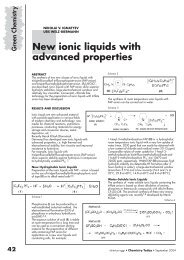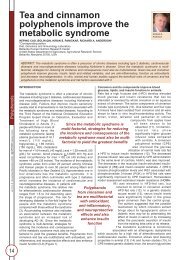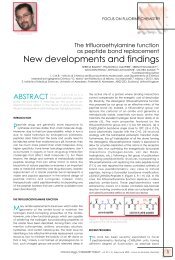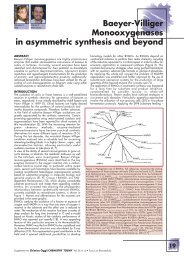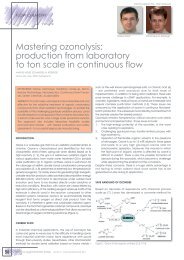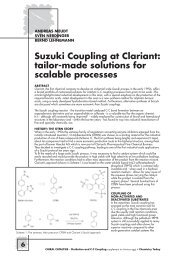Lake Como 2|4 October 2011 - CHIMICA Oggi/Chemistry Today
Lake Como 2|4 October 2011 - CHIMICA Oggi/Chemistry Today
Lake Como 2|4 October 2011 - CHIMICA Oggi/Chemistry Today
Create successful ePaper yourself
Turn your PDF publications into a flip-book with our unique Google optimized e-Paper software.
Segmented fl ow reactor: effi ciently develop chemical reactions using fl ow systems<br />
Jan K. Hughes a , Werner Zinsser b<br />
a Accendo Corporation, 3762 S. Carson Avenue, Tucson, AZ 85730-2544, USA<br />
b Zinsser Analytic GmbH, Eschborner Landstrasse 135, 60489 Frankfurt, Germany<br />
Over the past three years, the use of continuous flow reactors for organic chemical reactions has been on the rise as these<br />
systems enable extreme reaction conditions (300 °C and 150 Bar), which are not easily obtained using traditional laboratory<br />
equipment.<br />
Although continuous flow systems broaden the types of chemistries one can pursue, they have three major limitations when<br />
used for chemical development (screening and optimization) and library production: the minimum amount of reagent for<br />
each experiment/compound is very high, experimental throughput is very low and accurate reaction kinetic information<br />
is difficult to obtain.<br />
POSTER POSTER POSTER POSTER POSTER POSTER POSTER POSTER POSTER POSTER POSTER POSTER POSTER POSTER POSTER POSTER POSTER POSTER POSTER POSTER POSTER POSTER POSTER POSTER POSTER POSTER POSTER POSTER POSTER POSTER POSTER POSTER POSTER POSTER POSTER POSTER POSTER POSTER POSTER POSTER POSTER POSTER POSTER POSTER<br />
5555555555555555555555555555<br />
Meso scale fl ow reactions for reaction screening and optimization<br />
Kristin Price a , Joel Hawkins a , Neal Sach b , Terry D. Long c<br />
a Pfi zer Global Research and Development, Pfi zer Inc., Central Research Division, Eastern Point Road, Groton, CT 06340, USA<br />
b Pfi zer Global Research and Development, La Jolla site, Pfi zer Inc.,10777 Science Center Drive (CB6/2243), San Diego, CA 92121,<br />
USA<br />
c Accendo Corporation, 3762 S. Carson Avenue, Tucson, AZ 85730-2544, USA<br />
Flow reactors have proven to be a useful tool for organic chemistry as they enable the pursuit of extreme reaction conditions<br />
(300 °C and 150 Bar). There are a variety of commercially available continuous flow systems, which are primarily used for<br />
the synthesis of large scale quantities of starting material (gram) or product (kilogram).<br />
Until recently, flow systems were not generally used to explore new reaction conditions as in chemical screening and<br />
optimization or to make compound libraries as they require more reactant than needed for analysis or biochemical<br />
screening and they generally have low (poor) experimental throughput.<br />
POSTER POSTER POSTER POSTER POSTER POSTER POSTER POSTER POSTER POSTER POSTER POSTER POSTER POSTER POSTER POSTER POSTER POSTER POSTER POSTER POSTER POSTER POSTER POSTER POSTER POSTER POSTER POSTER POSTER POSTER POSTER POSTER POSTER POSTER POSTER POSTER POSTER POSTER POSTER POSTER POSTER POSTER<br />
6666666666666666666666666<br />
For flow systems to become more widely used as a tool for organic chemistry these<br />
limitations must be removed and one solution is the adoption of segmented flow systems.<br />
We explain how segmented flow works and how as little as 20 µL of reactant can be used<br />
per experiment, experimental throughput can be as high as ten times faster than that<br />
continuous flow systems and how extremely accurate reaction kinetic data is obtained.<br />
We review a meso-scale segmented flow reactor, commercialized by Accendo<br />
Corporation, for reaction screening and optimization where we were able to screen<br />
new conditions with small microliter amounts of reactant in high temperature conditions<br />
and compared these results with those performed in a microwave system. In addition,<br />
we describe chemical optimizations using design of experimentation (DOE) protocols<br />
and then using the optimized conditions and the segmented flow automated system<br />
for the synthesis of a 36 compound matrix library, which was done three times at three<br />
temperatures in order to dramatically increase the number of successfully synthesized<br />
compounds.<br />
25<br />
<strong>Lake</strong> <strong>Como</strong><br />
<strong>2|4</strong> <strong>October</strong> <strong>2011</strong>



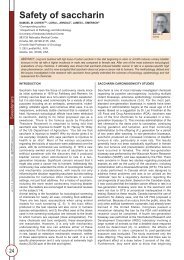
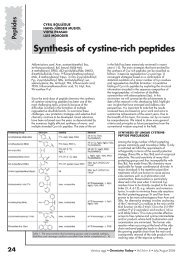
![Pietro Delogu [modalità compatibilità]](https://img.yumpu.com/12255149/1/190x135/pietro-delogu-modalita-compatibilita.jpg?quality=85)
